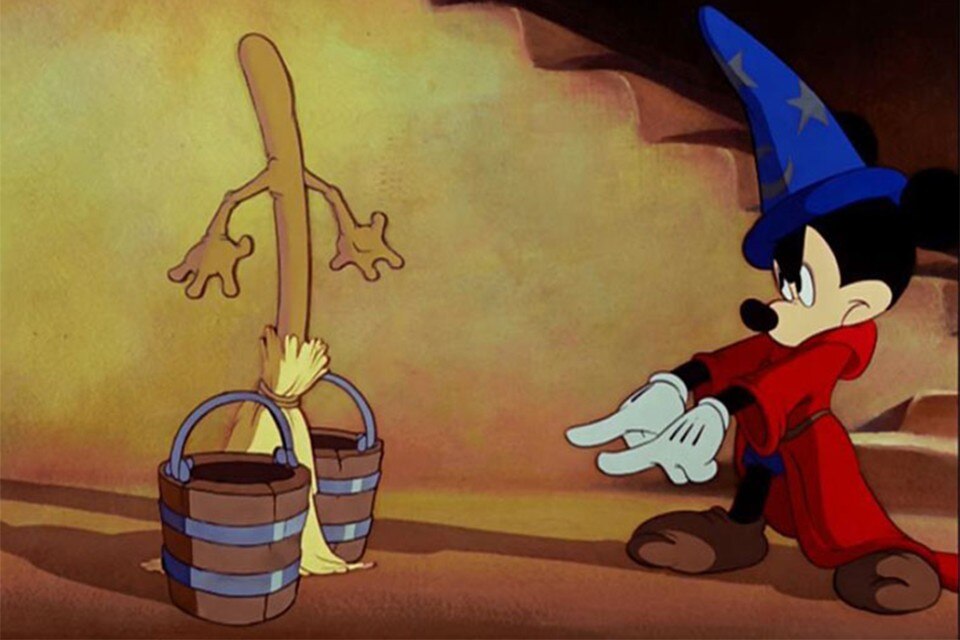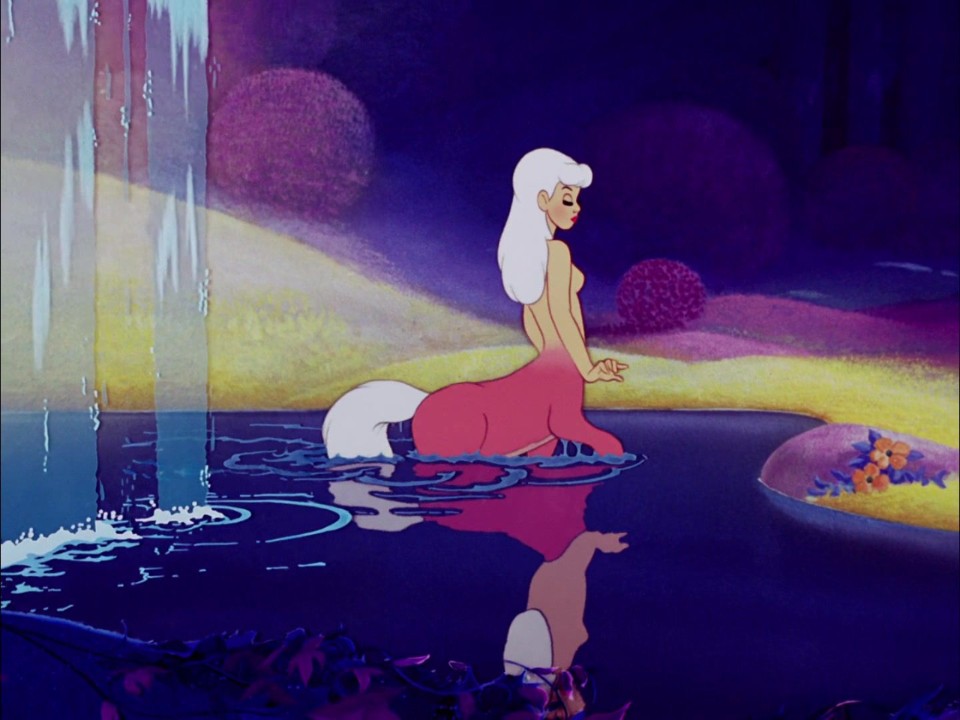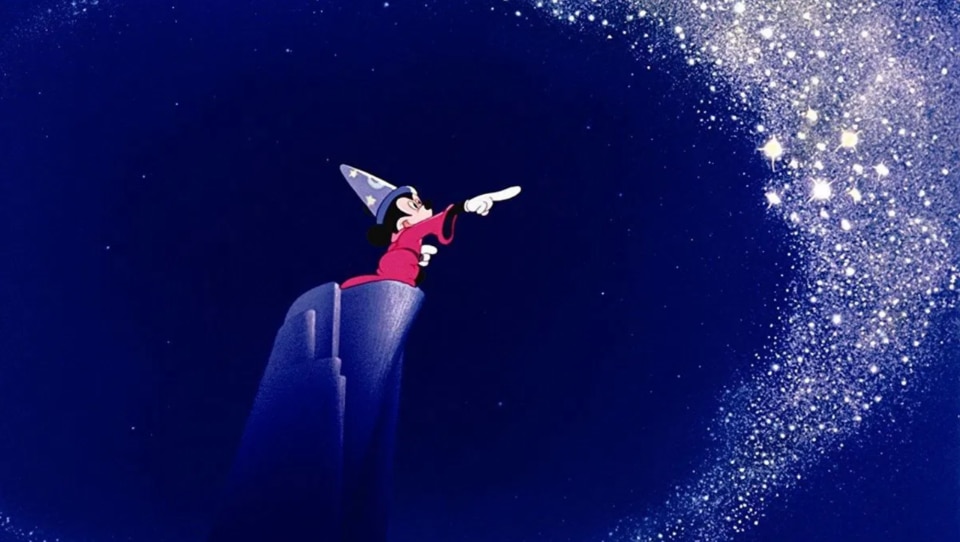This article was originally published in Domus 215, November 1946.
Two million dollars, or about one billion Italian lira today, cost the film Fantasia by Walt Disney. Fantasia is the music exposed to the people, is the free cinematic translation, in Disney vocabulary, of eight symphonic pieces, or pieces of music: it is, in simple words, Beethoven in Mickey Mouse scale.
Disney had so far joked with the jacks, this time he wanted to tease the saints. We all remember a very witty parody of the opera house made years ago by the irreverent Walt: on a small provincial park (the zootechnical province of “cardboard”), a chesty chicken, lyrical soprano, sang the tune of Traviata: “Sempre libera degg’io, trasvolar di gioia in gioia…” (“I must always be free, passing from joy to joy”) with the voice of the chicken that has just released the egg.
There was in that cry such physical happiness, as no Traviata, in moments of joy, has ever possessed. That hen was a stunt. It was, in the human zoo of Disney, a “type”. It came after Mio-Mao. Mickey Mouse, Pluto. It was the humanized bird. Behind her, many other flyers entered the ark. The last ones were the old barn owl of Bambi, and the parrot Jose Carioca dancer of samba in Saludos amigos. Mickey Mouse, Pluto, Carioca, the three little pigs, Donald Duck, the bull Ferdinand, together with Popeye “arm wrestling” son of Fleicher are the characters of the latest mythology, of American mythology: harmless puppets, jesters of a people who do not suffer from bad digestion.

Now Disney has pierced that little cardboard sky. Disney had made himself out of nothing, with a tempered pencil and a sheet of paper. Bastards of paper had sucked the milk of Cinema. He had grown up, following his bigger cousin’s mouths. He had made his voice, his colour. He enjoyed making women, men and horses almost like real ones. He made theatres almost like the real ones, skies and stormy seas like those of De Mille or Van Dyke.
The “cartoon” entered the army services, did the war propaganda, explained to the American soldiers the tactical operation, the mechanism of digestion, the use of penicillin, the damage of alcoholism and the operation of the machine gun. All this filled the pockets of Disney’s practical ambition.
Disney is a poet who became a merchant and wants to become a poet again. Difficult: he could not even Rimbaud. Fantasy was perhaps his great ambition. He made an effort, with the intention - he said it himself - to serve the music, to show it to the deaf.
“The audience will be able to see the music and listen to the drawings”. Well found. Only that Disney did not use abstract writing (concrete, it is said today), to colourful geometric writing, as was already seen in the cinema, and that is the only respectful way to translate the musical “number”: points, lines, arabesques, fireworks raised by the different bursting of sounds. Disney used its graphic repertoire. He has, in short, tried to “humanize” the music in the same way as he had humanized the chicken. The joke is legitimate where music lends itself to imitative caricature, where (Ponchielli, Duca, Mussorgsky, Ciaikovski) has a substance almost only narrative.

In the last part of Fantasia, in which Mussorgsky’s macabre Night on Bald Mountain dissolves into Schubert’s Ave Maria cantata, and the skeletons, the ghosts, the petrified devil is followed by a nocturnal procession of candles, Disney’s fantasy denounces the pathetic grotesque of his inspiration, the limits, to use a big word, of his culture. Back (Toccata and Fugue in D minor) luckily he makes himself respected, and his music can be “watched” with open eyes. There is only one objection to the quality of the colour. That it is not as beautiful as the audience believes.
Stravinsky’s The Rite of Spring is the subject of an instructive reconstruction of the years that saw the birth of the world, the life and death of our prehistoric people, the appearance of the sun and the sea. Thanks to the monsters, Stravinsky (this is a point for Disney) is able to make himself heard by the audience musically less polite. Who also feels certain respect for their origins.
But the number one of the show is Beethoven’s Pastoral in a mythological key, with the centaurs who make the step of the models, ponies, timing and wisteria skies: what a fan to think of those calendars that hairdressers offer customers on Christmas Eve. Accomplice of Disney in this well-deserved (perhaps really) work of divulgation is the master Leopoldo Stokowsky, illustrious example of cinematographic narcissism. He began with Greta Garbo. He followed with Deanna Durbin. Ends with Mickey Mouse?


